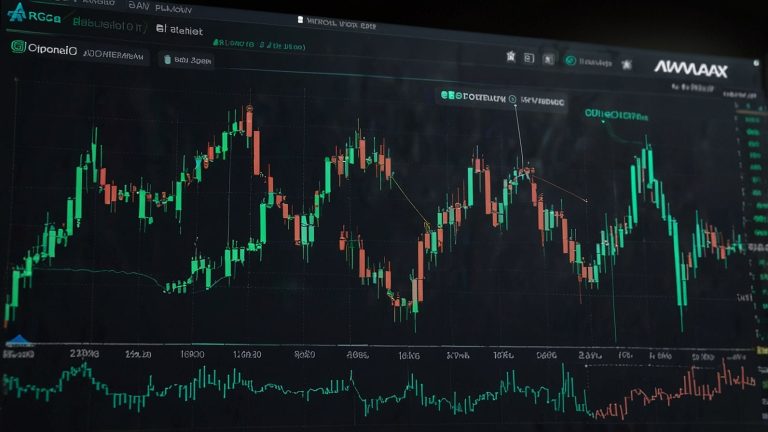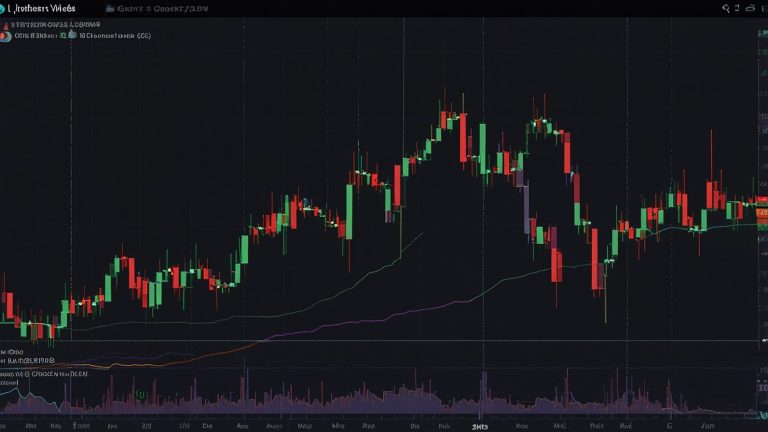Shiba Inu (SHIB) 30 October 2025 – Meme coin giant that has transformed into an entire ecosystem is pecking its way out of the doldrums of October like a vulture. SHIB is trading at $0.0000115 – up 12% in the past 24 hours and 7% in the past week – SHIB has cleared the overdue barrier at $0.000011 but on a wave of explosion, which has seen the rate of burn increase by 88,000% per cent and the resurgence of Shibarium to more than 10,000 daily transactions.
With the SHIB Army trending behind the next AI-enhanced utilities, such as Shib Fun, analysts are looking forward to a steep climb to $0.000015 in November, with parabolic levels of $0.00003 in the year-end signalling a meme coin transformation.
Such a revival comes following a disastrous October in which SHIB has lost 15 per cent amid widespread market fear and a rise in Bitcoin market dominance to 59.8%. However, on-chain indicators tell a rebellious story: Wallet addresses have now reached 1.55 million, and whale accumulation continues to reach 60% of the supply, with exchange reserves at a four-year low of 82 trillion tokens, which shows the potential of less selling pressure.
And at 589 trillion supply complete after the burns, SHIB deflationary dynamics are taking off, and the project is more than a Dogecoin competitor – it is a community-powered competitor to DeFi and metaverse supremacy.
Shibarium Transactions Blow Up: 700M Milestone Triggers Layer-3 and TREAT Token Launch
The Ethereum-scaling Layer-2, Shibarium, the self-sovereign cryptocurrency underpinning Shiba Inu, has surged back to life, recording more than 10,000 transactions per day, four times the figure in early October when the cryptocurrency was performing dismally.
It has since surpassed 700 million total transactions since its inception, with the most recent milestone being smart contracts of over 30,000 and active accounts of over 282,000. This spike is associated with the release of Shibarium Token Asset Repository, which is a feature that allows the smooth view of tokens and bridging between Ethereum, Sepolia, Puppynet, and the mainnet.
Developers are flocking to the improved DeFi Toolkit, which includes concentrated liquidity pools, ShibTorch burning, and Shib Paymaster for gasless user experiences. The four-pronged governance of ShibDAO, through social initiatives managed through Shiba Inu DAO, tech upgrades managed through Bone DAO, dispute resolution managed through Leash DAO and innovation funding, as managed through Treat DAO, has enabled veSHIB stakers to vote off-chain via Snapshot, reducing fees and increasing community control.
Plasma Bridge of the BONE is in operation, which has restored interoperability following a September exploit that emptied $4 million but was quickly contained, with all customers have been refunded their money.
In the future, the introduction of the TREAT token in December as a two-governing and gas token on Layer-3 will give impetus to incentives based on staking and providing liquidity. A full-fledged portal with real-time charts, news feeds, and advanced trading is promised with ShibaSwap 2.0, and Shiba Hub is offered as a centralised community nexus. These developments highlight how Shibarium has shifted its focus from meme hype to a strong infrastructure, and TVL slowly approaches $1 million, even though its sceptics highlight its lack of utility.
Burn Rate Eruption: 30M SHIB Torched in 24 Hours as Deflation Accelerates
SHIB burn mechanism, which was a staple of the scarcity story of the token, has gone up in flames like never before. Shibburn records indicate that almost 30 million tokens were burned in the last day, an increase of 88,250% over the previous amounts, taking the total burns to over 410 trillion. Deflation is being automated by real-time burns associated with Shibarium swaps, bridges, and liquidity adds, and all the transactions are eroding at the quadrillion-token roots.
This mania is consonant with whale tactics: Inflows surged 2,000% in recent lows, with smart money buying SHIB at the support of $0.0000096. The community-centred initiatives (such as collaborating with AI creators such as Bad Idea AI, which is currently topping the Crypto.com popularity charts) are directing burns into ecosystem grants.
With supply straining, the route to $0.0001, which seemed insane to consider as a marathon with no finish line, seems frustratingly near, and all the marathon needs is an 885% upsurge here to get it. The rest of the 589 trillion supply in circulation is cited by critics as a stumbling block, yet as the burns increase, SHIB has its tokenomics leaning to the bullish side.
Shytoshi Kusama Silence Breaks: AI Playground Shib Fun Set to Launch in December
The mysterious mastermind creator of Shiba Inu, Shytoshi Kusama, has finally broken a mysterious silence with suggestions of a redefining 2026 vision. According to his X bio, on the cutting edge, he teases AI integrations in SHIB, BONE, LEASH and TREAT.
According to a member of the team, Lucie, it will be in December 2025 that Shib Fun, an AI-driven playground that allows people to create tokens, play, and use them, will launch. It is a tokenplay-based platform for creating, playing, and earning without intermediaries, built by Astra Nova, and is an attempt at a new era in the history of the meme culture and intermediary-free DeFi composability.
The institutional resistance of Kusama to the pseudonymity-ensuring innovation is overcome, however, by the community zeal, the hashtag SHIBARMY goes global and silences the critics. Ecosystem vibrations run on grassroots energy at Shib restaurants conceived by AI by Kuro in Japan, through tech votes powered by veBone.
The ethos of the people coin that Shiba Inu is building is establishing real-life connections, even as LEASH v2 migration safeguards rebases and metaverse plots develop, remittance to NFT drops and beyond.
Technicals Signal Breakout: $0.000015 November Target, $0.00003 by Year-End
The chart is a masterpiece of a meme coin that SHIB is. The token has broken the 200-day EMA of resistance at $0.00001061 and created a bullish engulfing on the weekly after consolidating in its descending triangle of 0.000009 to 0.000012. RSI 55 – neutral but improving on oversold – MACD golden cross, volume has increased 40 per cent to $500 million a day.
Fibonacci retracement 0.618 serves as a support, a nd any false breakdown to 0.000009 will create a slingshot to 0.000015. By the time Bitcoin reaches the swell point of above 120,000, analysts such as SwallowAcademy predict a trend reversal area at 0.00001765, based on whether the cryptocurrency will remain stable or not.
Bear risks are a reduction to zero point 000007 in case of support crack, yet the support is 53% in the past month, and Fear and Greed stand at 51. The sentiment would be on the upside. In the long run, a double-bottom scenario will see SHIB hit the price of $0.00003 in December, changing its market cap to 18 billion US dollars.
System Growth: Meme to Multiverse, Institutional Whispers Develop
The maturation of the Shiba Inu is a little victory. Pilots of SHIB remittances eliminate 70% of costs, and millions of P2P transfers are processed with Litewallet integrations of African unbanked into the transfer system. The rumoured SkyBridge allocation of $50 million is reminiscent of the Avalanche bets, and the SHIB trust by Grayscale is looking at ETF conversion as the regulatory environment is softening.
Quantum-resistant upgrades are provided by developer grants, and EVM-smart contracts are supported 10x faster on sidechains built by RSK. Inspired by ordinals, 100,000 NFTs have been minted on the cultural drops, which compete with Joepegs. This is as Bitcoin Season fades away, SHIB, with low 9% volatility and 281,000 active wallets, is spoiled with altcoin season.
Price Outlook: $0.000015 Short-Term, $0.0001 Parabolic Horizon
CoinCodex is marking up $0.000012 by November 26, which is a 15% increase, with the averages converging at 0.000034 to highs in 2025. Changelly projects $0.000039 maximum, and InvestingHaven predicts that the double-bottom in 2026 will be 0.00008. To make it to 0.0001 would require an additional 770 per cent – this would be ambitious, but achievable with burns and 1.2 billion transactions YTD by Shibarium.
Bears mention TVL misfortunes and macro increases, yet SHIB’s 105% 2024 growth is hard to kill. As flywheels, DAOs, and AI keep rising with a place of burns, as well as AIs, with the potential of earning more than 1000 dollars in 2026, one can foresee going past previous ATHs with an investment of 1,000 dollars today.
The Shib Army Marches On: 2025’s Meme Renaissance Beckons
The defiant stand of Shiba Inu would be on October 30, 2025. Burn infernos to phoenixes of Shibarium, SHIB is beyond speculation – it is a decentralised fantasy. Since Kusama lays the groundwork on the cutting edge, purchasers are not merely placing bets on pumps, but they are constructing a multiverse. The pack cries: To the moon, or bust.












 Bitcoin
Bitcoin  Ethereum
Ethereum  Tether
Tether  XRP
XRP  USDC
USDC  TRON
TRON  Lido Staked Ether
Lido Staked Ether  Cardano
Cardano  Avalanche
Avalanche  Toncoin
Toncoin  Solana
Solana